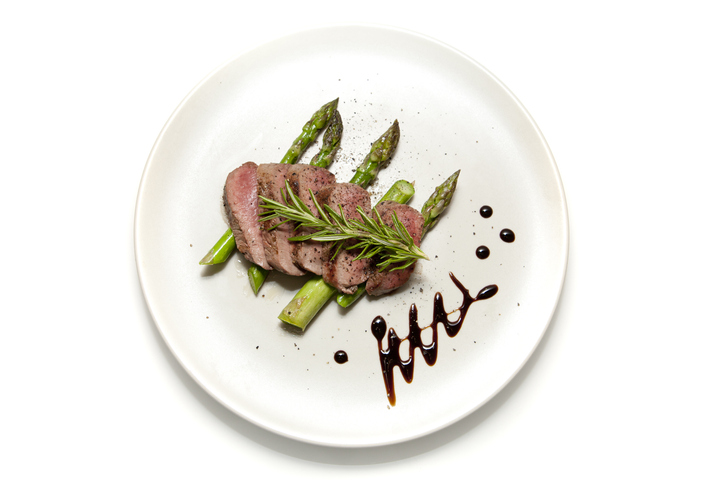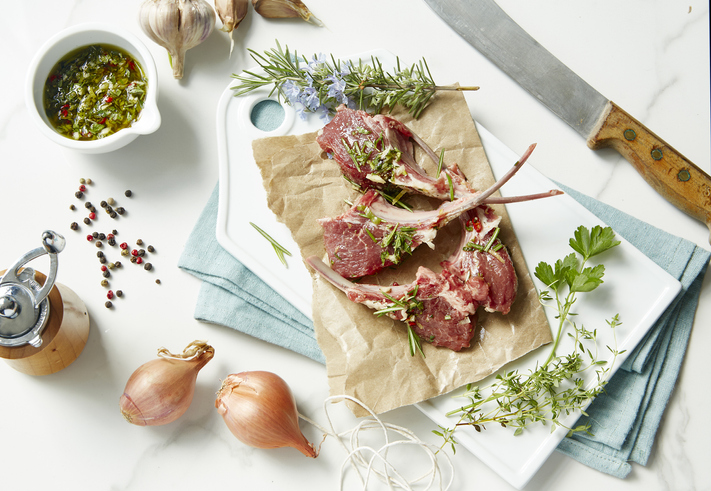5 Reasons To Eat More Lamb

If you are a meat and seafood eater, you may often find yourself getting in the rut of eating chicken, fish, steak, chicken, fish, steak and more chicken, fish, steak.
Now that you are spending more time at home, it might be time to change this up and add another meat in the rotation. And recently, one of the ways I’ve been getting out of my “protein rut” is by making more home cooked meals with lamb. This protein is a type of red meat that comes from young sheep.
In the United States, consumption of lamb appears to be pretty low. For example, some reports say that the average American eats less than a pound of lamb per year. On the other hand, Americans eat a lot of beef (some sources say the average American eats more than 80 pounds of beef per year).
Here’s why you may want to include more lamb in your diet:

Lamb is richer in iron than chicken or fish.
Iron is a critical mineral that every single cell in your body needs. It is needed to make hemoglobin, a component of your red blood cells that delivers oxygen to all the cells in your body. Without adequate iron, your body can’t carry enough oxygen to your vital organs. Low iron levels may also leave you feeling quite tired.
(Iron deficiency is one of the most common nutrient deficiencies worldwide).
Lamb is a good source of conjugated linoleic acid (CLA).
There is some evidence that consumption of foods naturally enriched with CLA may reduce body fat and improve body composition. It may also reduce the likelihood of some diseases associated with obesity.
“Conjugated linoleic acid (CLA) is highly found in fats from ruminants and it appears to favorably modify the body composition and cardiometabolic risk factors. The capacity of CLA to reduce the body fat levels as well as its benefic actions on glycemic profile, atherosclerosis and cancer has already been proved in experimental models. Furthermore, CLA supplementation may modulate the immune function, help resynthesize of glycogen and potentiate the bone mineralization,” according to the National Institutes of Health (NIH).
(Lamb contains more CLA than beef and veal).
Lamb may be great for kids.
“Lamb meat, when used in the weaning diet of children, is presumed to have a lower allergenicity than other forms of red meat. In children with atopic dermatitis and multiple food hypersensitivities, consumption of lamb meat has also resulted in significant clinical improvements in the severity of the eczematous lesions. Lamb meat is also of special interest in infant nutrition because it provides a somewhat unique fatty acid (FA) profile that mirrors what is thought to be optimal for neonatal growth and development,” according to the National Institutes of Health (NIH).
(As always, seek the advice of a competent healthcare professional about what foods you should include in your infant or toddler’s diet).
Another fun fact is that the lower allergenicity of lamb is one of the reasons why it is commonly found in store-bought dog foods.
Lamb is also a great source of omega-3 fatty acids.
Most cuts of lamb have more omega-3s than beef.
Omega-3 fatty acids are known for their brain and heart health benefits. The benefits of omega-3 fatty acids include a reduced risk for heart attack and stroke, increased protection against Alzheimer’s disease, assisting in healthy neurological and eye development for fetuses and newborns, lower cholesterol and improvement in symptoms of rheumatoid arthritis. There are also studies underway examining the use of omega-3 for depression, bipolar disorder and inflammatory bowel disease.
Lamb tends to have less "marbling" than steak.
Marbling is intramuscular fat (it is the white streaks you can see in some cuts of meat).
It is easy to trim this fat off of most cuts of lamb, however, you cannot get rid of the marbling in a cut of sirloin steak (for example). So lamb can be a good lean meat option if prepared properly.
For leaner cuts of lamb, go for the loin, shank and leg.
Lamb is also a great source of essential nutrients, including vitamin B12, selenium, vitamin B3, zinc and phosphorus.
My favorite lamb dish is West Indian Curried Lamb. But check out this recipe for grilled leg of lamb with mint-garlic rub. And as always, eat meat in moderation and be sure to include plenty of fresh vegetables on your plate.
If you have heart disease or any other existing health issues, it is always advised to speak with a competent healthcare professional about what foods are appropriate to include in your diet.
Enjoy your healthy life!
The pH professional health care team includes recognized experts from a variety of health care and related disciplines, including physicians, attorneys, nutritionists, nurses and certified fitness instructors. This team also includes the members of the pH Medical Advisory Board, which constantly monitors all pH programs, products and services. To learn more about the pH Medical Advisory Board, click here.







